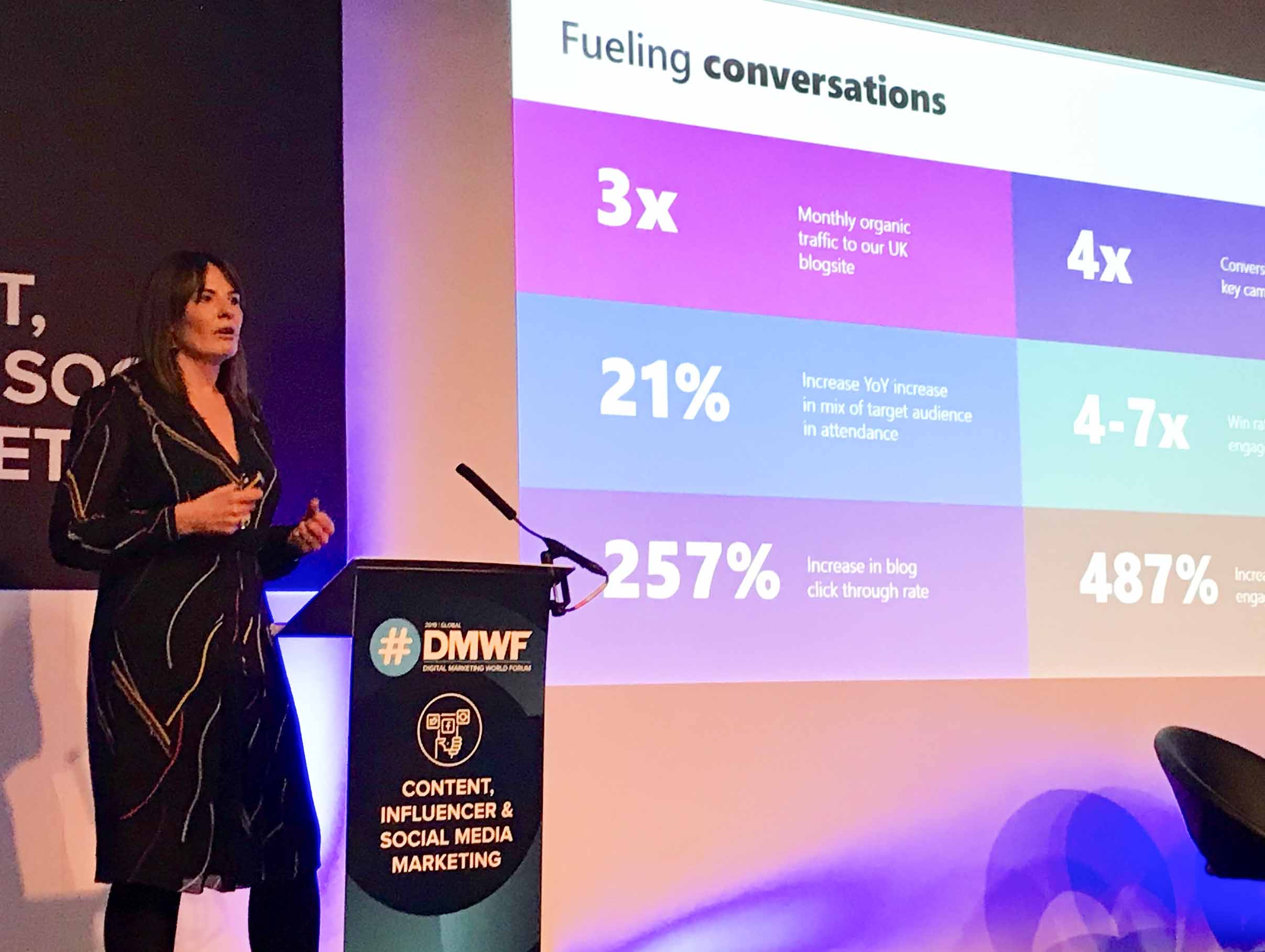Metia’s Content Resonance System helps drive sales at scale for Microsoft
24 May 2019
Data driven storytelling has enabled Microsoft to significantly improve its customer engagement, driving a greater level of commercial accountability, and success for the marketing team.

This was the headline of a presentation by Microsoft’s UK Digital Lead, Catherine Wignall, speaking at Digital Marketing World Forum in London. I was fortunate enough to attend and hear her explain Microsoft UK’s approach to an audience of attentive marketers. The presentation covered both their internal storytelling engine and the role of Metia’s Content Resonance System (CRS). I captured the key points shared by Catherine for marketers unable to attend.
Creative storytelling to make an emotional connection
“The purpose of the UK marketing team is to augment the sales experience. Our goal is to help tell Microsoft’s story in a way that connects with the UK audience and communicate the value of its solutions at scale,” said Wignall.
Microsoft customers are exposed to multiple messages from across the business at any one time. The customer journey isn’t linear and no longer fits into the perfect picture of a demand funnel.
“The customer is in charge of their own journey. They do their own research into their business challenges or needs. They come to us armed with information through the channels they prefer, whenever they are ready to engage,” said Wignall.
Success relies on peer to peer engagement and authentic, creative storytelling that makes an emotional connection with the customer, and inspires action. According to Wignall, the goal of modern marketing is no longer to interrupt an audience but to take it on a journey with the brand.
Using content resonance to engage customers
That journey begins with Microsoft use of Metia’s Content Resonance System (CRS) to help identify the language of customers around its key solution offerings.
CRS surfaces organic conversations in any public digital space. It identifies the business challenges that customers are researching, the insight they are seeking, the information they are sharing, and the specific language they are using. It evaluates share of resonance versus competitors and identifies emerging white space opportunities for conversation.
Microsoft uses Metia’s CRS as a continuous study. The CRS output is used as a quarterly campaign framework. It enables the marketing team to understand how well it is delivering resonant content across different channels, making optimization recommendations, and ensuring content is relevant and discoverable.
Peer engagement: Microsoft employees as advocates
Microsoft’s data led CRS approach is combined with employee advocacy.
The Edelman Trust Barometer reports that 47% of people ranks a company’s employees rank higher in public trust than a firm’s public relations. Peers are viewed as the most credible source of information as an expert.
“Employees have valuable knowledge that customers want to hear. Our goal is to support them in finding ways to authentically share that knowledge using appropriate media,” said Wignall.
Microsoft staff are trained in six areas of digital competence. This includes: personal branding; social media basics; analytics; content creation; writing; and media competency.
Business metrics, not just marketing metrics
The results are compelling.
Wignall says that the combination of content resonance and employee advocacy enables the Microsoft marketing team to align with commercial stakeholders around metrics such as leads and incremental revenue.
Traffic, click through rates, engagement, and event attendance have all increased and win rates are four to seven times greater where customers engage via social channels.



